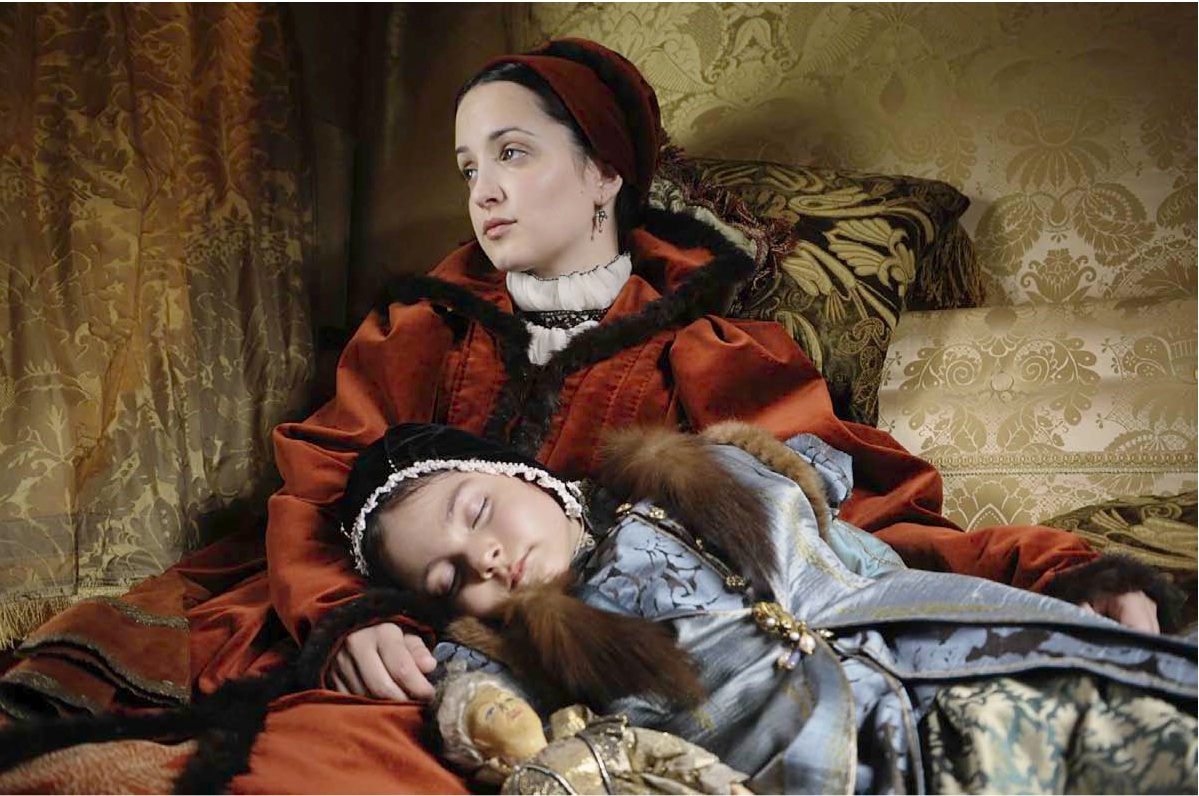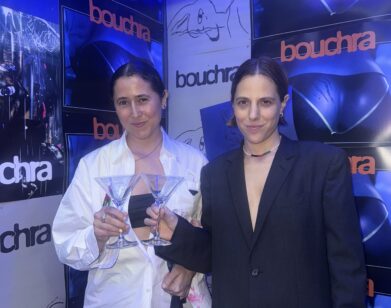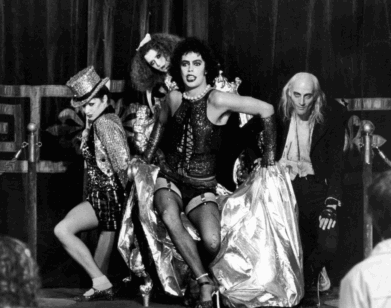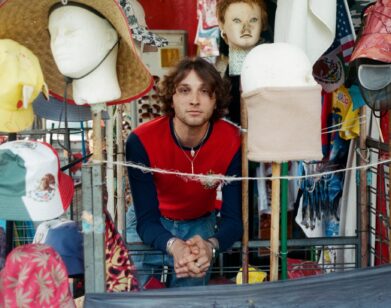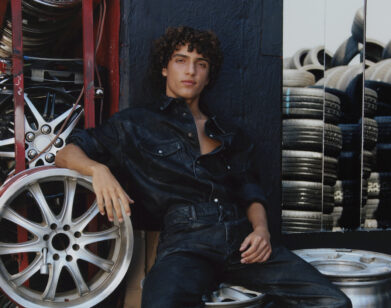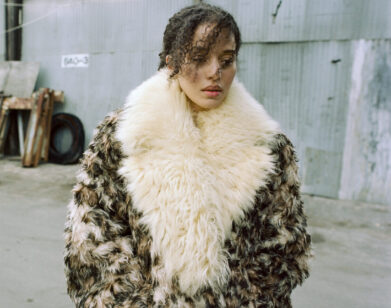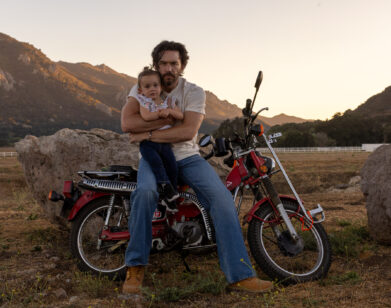Lisy Christl, Out of Anonymity
With his new film Anonymous, director Roland Emmerich imagines a world in which Shakespeare wasn’t Shakespeare at all, but an imposter amidst royal intrigue. What unfolds is a world of Elizabethan drama starring Rhys Ifans and Rafe Spall, with Vanessa Redgrave and her real-life daughter Joely Richardson playing the titular queen. Emmerich called on a fellow German, costume designer Lisy Christl, to turn fantasy into reality and a country boy from Stratford into a famous playwright (hint: colors). She talks about how she stayed true to—and got imaginative with—the era.
LEILA BRILLSON: The Elizabethan era is such a rich time for costume design. It’s one that has fascinated us over and over again. Tell me about working on a period film.
LISY CHRISTL: You know, for a costume designer, it’s the biggest dream to work in this period. So it starts with the wonderful work of research, and then to find the right people to do it with you, and we decided to work with two workshops in London. We created our own workshop, since we wanted to create something that belongs to our story. You start with how it was, and then you find your own way. You become familiar with the time period. And we had, not only the court and all the nobles, but quite a few theater performances. We had many poor people to dress. We rented quite a few costumes for all the poor people, for the people in the theater and on the streets. I think the major challenge was to find what makes it familiar for us. Something we know, something we like… This was very important for us.
BRILLSON: In which ways did you honor the time period?
CHRISTL: The colors guided a lot of design. There were colors allowed for normal people, for poor people, and for nobles. So, for example, black, red, green, and blue were the colors for the nobles, and there was a very simple reason: to dye these colors was very expensive. The next thing was the fabric worn by the noble people, because silk was very expensive. You couldn’t buy fabric around the corner, and silk was shipped from all over the world. So these details already give a kind of a frame where you can move and where you can’t. So this was kind of a starting point to jump into this Elizabethan England.
BRILLSON: You have a strange experience, because you’re designing for a movie and designing for the stage. So it’s kind of like several layers of costuming here. Did you have to take anything extra into consideration?
CHRISTL: I had a lot of fun and a lot of freedom, because Roland Emmerich gave me a lot of freedom. Part of the work basically started with the research. The other part, the theater costumes, was harder because you can’t really do proper research because there are no paintings. There were plays at the court, but there is not much known about the actual costuming. Of course, I read a lot, and what we have done is a bit exaggerated. It’s not really based on facts. Roland allowed us to do this. So what you see in the plays is more invented, like for Midsummer Night’s Dream, it seemed like a fairy tale.
BRILLSON: Did you have a specific costume that you liked making the best?
CHRISTL: There are a few of them I really love. I had a lot of fun with Elizabeth’s costumes. I love the fun with the Midsummer Night’s Dream costumes. But you know, it’s difficult to say I love this costume more than the other ones because they belong to a certain character and it’s just right for a person.
BRILLSON: There are these massive collars I’ve seen in the previews for Elizabeth’s character. Were there any challenges that you were faced with these?
CHRISTL: Yeah, there were many challenges, especially in the later period. The colors became quite big. The dresses became very big, and to balance them and work on the undergarments, took us quite a while. There are so many challenges to find the right lace, the right embroiderer. It’s really a journey. It’s a long journey, and at the same time, you have only a few months to find everything and create your own taste in the certain period.
BRILLSON: Right. And so can you think of a particular garment or something that really presented it’s own challenge?
CHRISTL: Yeah, there is. One of the last dresses, with huge pleats and the huge skirt.
BRILLSON: You’ve spent a lot of time in the past working with Michael Haneke, who doesn’t have many ornate costumes. What was the difference in working with Michael on more realistic movies and with Roland?
CHRISTL: I think it’s the biggest difference you can imagine. With Michael Haneke, I’ve done very realistic movies, and the question was always, “Is it possible? It is right? Can it be like this?” With Roland it was an adventure to invent and find your own language in a certain period. I think I’m a very lucky person to work with two very different directors. It’s a totally different way of thinking, a different way of research, totally different scripts. I enjoyed the two of them, but I enjoyed the difference between the two of them.
BRILLSON: There’s just so much lush detailing in that era, and the images I’ve seen are just really superb. Were there any tips you’ve learned or secrets that you’ve discovered from the way that period made clothing? For instance, any treatments that you’ve never used before or that you found yourself learning about?
CHRISTL: Yeah, you know, for example there is a dress from Vanessa [Redgrave]. It looks heavily embroidered, but it isn’t. It’s burnt into the velvet, burnt and painted. I’ve never done something like this before, but I worked with people who were more experienced in the period. It should look faithful, but we haven’t six months to embroider a pair of pleats. We work with a lot of heavy aging stuff. We burned, we boiled, we dyed, we waxed. Because the film looks like an old painting, so the fabric needed body and richness.
ANONYMOUS IS OUT IN THEATERS TODAY.

